Wednesday, December 30, 2009
Exporting Paths from Adobe Illustrator to 3ds Max - Tip
Thursday, December 17, 2009
Military Chests
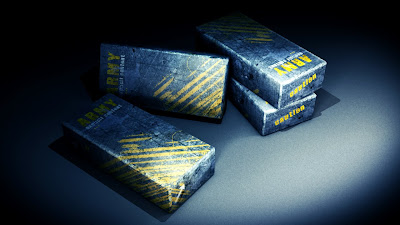
Digital Painting
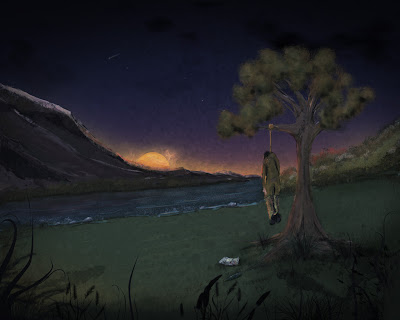
Logistics Support - Web design
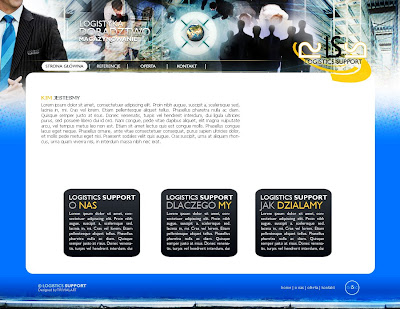
Tuesday, November 10, 2009
Changing picture resolution down Sharpen Filter helpful again
This technique is very helpful for another one situation. If you are working with big resolution picture which has a lot of description (for example maps, fonts), details and you will have to decreasing resolution to less picture. Maybe for posting in web the details, descriptions as types will be blurred and washed because of removing some pixels from picture during changing image size down. Than you can apply sharpen filter for recovering those details from your art work. I tried this when I was working for APO, designing the map for their online game. I posted it below.
Whiteout sharpness the map looks bad and names of location weren't readable. It was very noticeable from closed distance after zoomed image in.
Photoshop Sharpen Filter Tip
I would like to share some tip that I discovered working in Photoshop during making Video Copilot Banner. It gave me batter look and mood of banner and also increase quality as riddance of graphic too. It was more clean and all elements were better consisted together. Working with another one posted in this tread. I noticed that I can improve a quality by adding a little sharpness for finished version of banner.
What I did I made a copy of layer (short key ctrl + J) and turned it to Smart Filter. Smart Filter helps you precisely adjust amount of effect of filter that you applied to your graphic without doing this same again by deleting and creating layers. Smart Filters appear in the Layers panel below the Smart Object layer to which they are applied. Because you can adjust, remove, or hide Smart Filters, they are nondestructive. You can get more information from Photoshop Online Support. Next step is just applying sharpening filter Filter/Sharpen/Sharpen More and adjusting opacity for better consisting both layer. We don’t want to be sharpness too strong. If the effect is too hard in some parts of picture I also using Mask and Soft Brushes for better and precises adjusting. That’s all. You can also try others sharpen filters, something one will be better than others. It depends on your project.
I thinks it’s very settle effect but improve quality of your designing. Everything is more clear. We removed this washed and blurred effects that was not very good. I think many people forgetters about sharpening and leaves graphics blurred and not sharp and strong clear. I think with this kind of effect it looks more filmy.
Here below you can see the difference between banners.
Tuesday, October 27, 2009
Burst Test
Monday, September 28, 2009
Trivialart Blogger Banners
Teapots
I just wanted to try some different style. I made this random designing for fun and creative training. Project is composition of 3d rendered teapots and 2d designed elements in Photoshop.
Monday, September 21, 2009
Trivialart 3D
Saturday, September 12, 2009
Thursday, September 10, 2009
Digital Painting - Angel

Tuesday, September 8, 2009
Armia Podkarpacki OTS
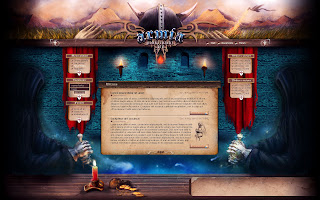
Video Copilot Banner Contest
Więcej na stronie projektu VC

Motion Web Promo
Link do youtube: Motion Web Promo HQ
Podkład muzyczny pochodzi z utworu Chris Cornell feat. Timbaland - Part of me.
Monday, September 7, 2009
Ford Mustang GTO
Wednesday, August 26, 2009
Ford Mustang GTO
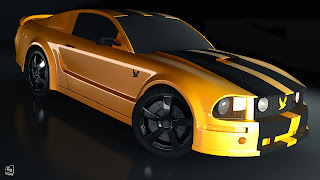
Monday, August 24, 2009
Szybkość, a jakość - Final Gather w Mental Ray'u
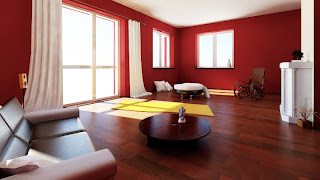
Jakiś czas temu napisałem referat o renderowaniu wizualizacji wnętrz w 3ds Max 2009 przy użyciu silnika renderującego Mental Ray. Artykuł zawiera sporo wskazówek dotyczących parametrów samego silnika, jego ustawień i funkcji. Dodatkowo zawarty jest opis najważniejszych funkcji Final Gather'a. Ponadto przedstawiłem proces renderingu i organizacji pracy od wstępnych faz (testowania, dobór światła itd.), aż po ostateczny render (pipeline). Zachęcam do lektury i ćwiczeń, poniżej zamieszczam krótkie wprowadzenie, oraz finalny render sceny użytej podczas pisania referatu. Sam referat został wygłoszony podczas tegorocznej sesji kół naukowych Politechniki Krakowskiej.
Szybkość, a jakość - Final Gather w Mental Rayu
Arkadiusz Leszko
Powszechnie wiadomo, że renderowanie jest procesem kosztownym ze względu na czas. Sam rendering to proces tworzenia danych wyjściowych o różnym stopniu złożoności dla obiektów sceny[1]. W zależności od skomplikowania sceny może się on wahać od kilku godzin do kilku dni i tygodni. Mental Ray jest wysoko wydajnościowym silnikiem renderowania, pozwalającym generować obrazy fotorealistyczne i w swoim działaniu wykorzystuje metodę śledzenia promieni świetlnych.W grafice komputerowej rozróżniamy dwa główne typy oświetlenia: Global Illumination (Oświetlenie globalne) i Indirect Illumination.(Oświetlenie pośrednie). Bez odpowiednich algorytmów symulujących poprawnie zachowanie tych dwóch typów oświetlenia nie jesteśmy w stanie osiągnąć obrazów fotorealistycznych. Shadery typu Indirect Illumination obliczają światło pochodzące nie tylko od źródła, którym może być żarówka, czy słońce, ale także odbite od innych obiektów w scenie. Na potrzeby rozwiązania tych problemów Mental Ray wykorzystuje dwie podstawowe metody generowania (symulowania) oświetlenia typu Indirect Illumination. Jest to Final Gather, oraz GIobal Illumination wykorzystujący w swoim działaniu fotony. Final Gather opiera swoje działanie na promieniach, które są rozpraszane w scenie. Stąd jego skuteczność często wynika z ilości promieni, które będzie wykorzystywał. Dodatkową ich własnością jest możliwość odbijania się od powierzchni, dzięki czemu uzyskiwany jest efekt "krwawienia kolorów" (Color bleeding). Rendering nabiera większego realizmu. Porównując wydajność aplikacji 64-bitowej z 32 bitową możemy zauważyć, że dla małych zadań, renderingów testowych aplikacja w środowisku x86 wykazywała minimalnie lepszą wydajność ze względu na czas. Jendak w przypadku, gdy próbujemy wyrenderować naszą scenę z maksymalnymi ustawieniami i w dużej rozdzielczości, środowisko x64 okazuje się znacznie lepsze. Warto przy pracy z programami do obróbki i tworzenia grafiki sięgnąć po system i aplikacje 64-bitowe.
It is known that rendering is very time consuming. It is a process of making 3D scene data output in the form of image. It depends on variety and complexity of the scene and it can take from few hours to several days. Mental Ray is a highly efficient rendering engine. It allows for making photorealistic images, and it uses ray tracing algorithms. Computer graphics mainly use two types of illumination: Global Illumination and Indirect Illumination. Shaders of Indirect Illumination’s type compute light coming from many different light sources, which can be sun or lamp, but also diffused light, which comes from other objects in scene. Mental ray applies Final Gather for simulation of Indirect Illumination. FG uses rays, which are distributed in the whole scene. FG rays can bounce and make color bleeding effect. The render is more realistic when Final Gather is used. When we compare efficiency of 64-bits applications whit 32-bits ones, we can observe that for small tasks and test renders x86 enviroment is minimal better, regarding the rendering time. However , rendering in x64 enviroment, in the case of maximum quality and big image resolution, is more accurate and productive.
[1] Kelly L. Murdock – „3ds Max 8 Biblia”

















